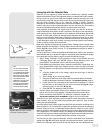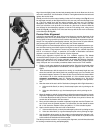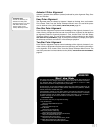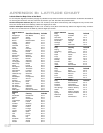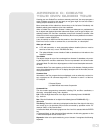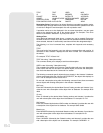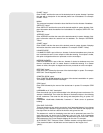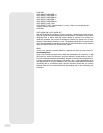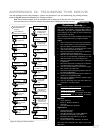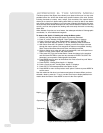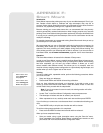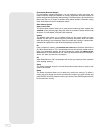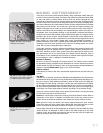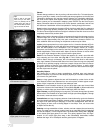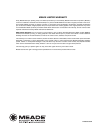
Train the telescope motors using Autostar II. Perform this procedure if you are experiencing any pointing accuracy
prob
lems.
Fig.
55
depicts the complete Dr
ive Training procedure.
Note: Use a terrestrial object, such as a telephone pole or lamp post, to train the drive. Complete this exer-
cise once every 3 to 6 months to maintain the highest level of telescope pointing accuracy.
Figure 55: Training the Drive Procedure.
Press > until it
i
s centered
Press < until it
is centered
T
rain Drive
Az. Train
Train Drive
Alt. Train
Drive Setup
For this op. . .
Center reference
object
ENTER
ENTER
ENTER
ENTER
S
cope slews left.
Bring target back
to center using
t
he Right Arrow key.
12
1
3
1
4
15
16
17
Scope slews right.
Bring target back
t
o center using
t
he Left Arrow key.
Menu returns to
Az. training.
Altitude
(vertical)
training.
Reminder to
use terrestrial
target.
Train Drive
Az. Train
Select Item
Object
Press until it
is centered
Press until it
is centered
ENTER
ENTER
MODE
18
19
20
21
Center target
using Arrow
keys.
Scope slews down.
Bring target back
to center using
the Up Arrow key.
Scope slews up.
Bring target back
to center using
the Down Arrow key.
Multiple presses.
ENTER
Select Item
Object
Select Item
Setup
Setup
Align
Setup
Telescope
3
4
6
ENTER
Press the scroll
up key once.
Access the Setup
m
enu.
M
ultiple presses.
Access the
Telescope menu.
5
ENTER
1
Telescope
Telescope Model
Telescope
Train Drive
Train Drive
Az. Train
Drive Setup
For this op. . .
Center reference
object.
ENTER
ENTER
ENTER
Multiple presses.
Choose the Train
Drive option.
Azimuth
(horizontal)
training.
7
8
9
10
11
Reminder to
use terrestrial
target.
Center target
using Arrow
keys.
ENTER
Verify that AUTOSTAR
INITIALIZATION is
complete.
P
ress MODE until
Select Item is displayed.
1
2
>
>
APPENDIX D: TRAINING THE DRIVE
Further Study....
This manual gives only the briefest introduction to astron-
omy. If you are interested in pursuing further studies in
astronomy, a few topics are suggested below that are
worth reading up on. Try looking up some of these in the
optional Autostar II glossary.
Also included below is a small sampling of books, maga-
zines, and organizations that you might find helpful.
Topics
1. How is a star born? How does a solar system form?
2. How is the distance to a star measured? What is a
light year? What is red shift and blue shift?
3. How are the craters on our Moon formed? Is there
water under the surface of the Moon?
4.
What is a black hole? A neutron star? A quark star?
A gamma burster? An Einstein lens?
5. What are stars made of? Why are stars different col-
ors? How is the elemental composition of a star
determined? What is an Lyman Alpha forest?
6. What is the difference between a Type 1 and a Type
II supernova?
7. What is the importance of studying the composition
of comets? Where do comets come from?
8. How old is our Sun? Will our Sun evolve into a plan-
etary nebula or go supernova?
9. What is the Inflationary Big Bang? What is dark mat-
ter? What are MACHO's?
10. How are extrasolar planets discovered? What is an
accretion (or protoplanetary) disk?
11. What are the differences between elliptical, spiral,
and irregular galaxies?
12. Have we discovered proof that water exists any-
where else in our solar system?
Books
1.
The Guide to Amateur Astronom
y
by Jack Newton
and Philip Teece
2.
The Sky: A User’s Guide by David Levy
3.
T
urn Left at Orion by Guy Consolmagno & Dan Davis
4.
Astrophotog
raphy for the Amateur by Michael
Co
vington
Magazines
1. Sky & Telescope
Box 9111, Belmont, MA 02178
2. Astronomy
Box 1612, Waukesha, WI 53187
Or
ganizations:
1. Astronomical League
Ex
ecutiv
e Secretar
y
5675 Real del Norte, Las Cruces, NM 88012
2. The Astronomical Society of the Pacific
390 Ashton A
ve., San Francisco, CA 94112
3.
The Planetar
y Society
65 North Catalina Ave, Pasadena., CA 91106
And watch Jack Horkheimer,
Star Gazer, on your local
PBS station.
RCX400 TIPS
67



